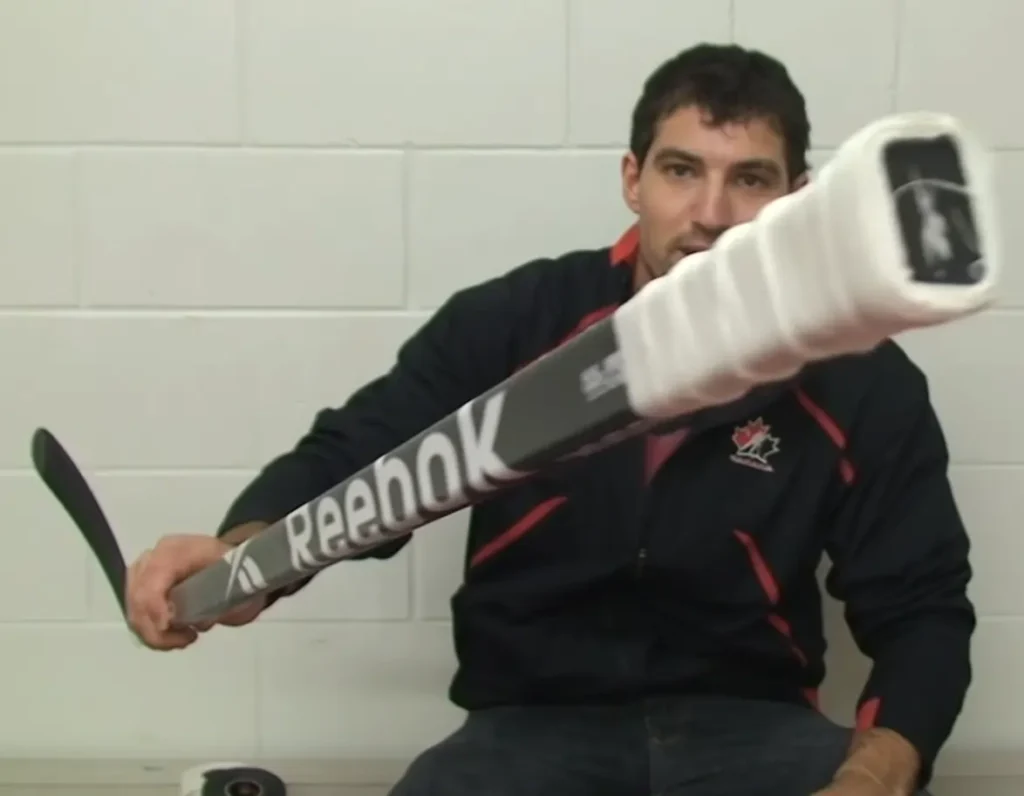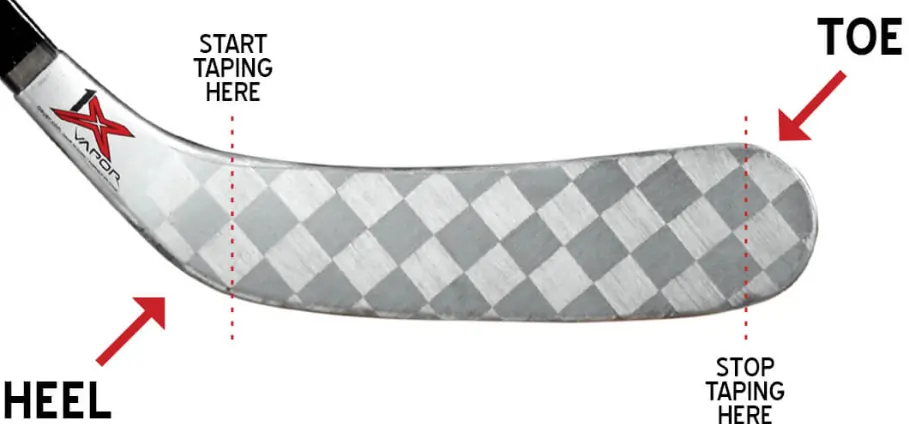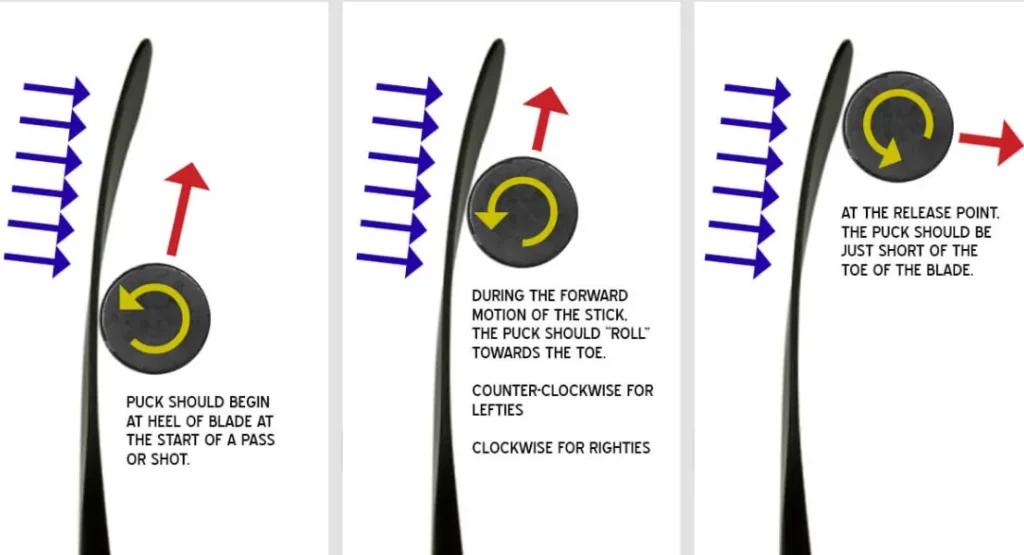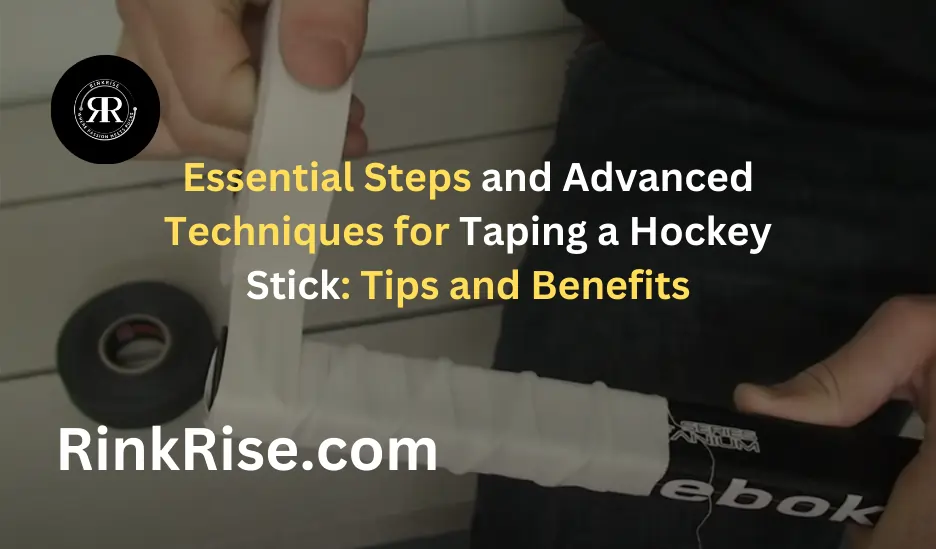Hockey is a thrilling sport filled with the sound of blades slicing the ice and the feel of wind rushing past. Every player is familiar with the vibrant atmosphere of the rink. Amidst these sensory experiences, taping a hockey stick emerges as a seemingly modest but essential aspect of the game.
The art of taping your stick is as critical as grasping the intricate rules of hockey. This guide emphasizes the fundamental steps and advanced methods to effectively tape your hockey stick, offering both practical tips and underlying benefits to enhance your gameplay.
Understanding Hockey Stick Tape: Composition and Varieties
Hockey tape is crafted specifically for the demands of hockey, ensuring durability throughout the game. This tape is typically made from a blend of poly/cotton fabric, which provides strong, long-lasting adhesive qualities. Available in various colors, it allows players to choose according to their personal style or team strategies.
Key Reasons for Taping a Hockey Stick
Taping a hockey stick is not merely a routine but a crucial practice in the sport. Here’s why it’s important:
- Enhanced Puck Handling: Just as a skilled goaltender manages the puck with finesse, a well-taped stick enhances your ability to control and maneuver the puck. The tape adds a layer of cushioning that improves your tactile connection with the puck, allowing for better handling.
- Improved Grip: In the intense moments of a game, when your gloves are damp with sweat and every play counts, a secure grip on your stick can mean the difference between scoring the winning goal or missing a critical chance. Taping your stick enhances this grip, aiding in precise shooting and passing.
- Stick Protection: Similar to choosing the right protective gear, like a helmet, taping your stick is vital for shielding it from damage. In the rough and tumble of ice hockey, your stick endures significant wear from body checks and powerful slap shots.

Exploring Different Types of Hockey Stick Tape
Choosing the right type of hockey tape is crucial for any player. Here are the common types, each with unique advantages:
- Cloth Tape: Preferred by many due to its durability and superior grip, cloth tape is reliable for both intense championship games and off-ice training. It ensures your stick performs consistently, regardless of the pressure.
- Synthetic Tape: Known for being lighter than cloth tape, synthetic tape offers the benefit of resisting water absorption. This keeps your stick lighter during wet conditions, ideal for players who prioritize a lighter grip and enhanced puck sensitivity.
- Grip Tape: Offering a distinct rubbery texture, grip tape enhances stick handling by providing an improved grip. It is less common on the blade as it can reduce puck feel.
Essential Guide to Taping a Hockey Stick
Taping a hockey stick is a skill that enhances your game, much like knowing how to properly sharpen hockey skates. Here’s a straightforward guide on how to do it:
- Blade Taping: Begin at the heel of the blade and wrap the tape in overlapping layers up to the toe. This heel-to-toe method provides full coverage and aids in better puck control.
- Handle Taping: Around the top end of the stick, wrap the tape to form a knob that comfortably fits in your hand, enhancing your grip and preventing the stick from slipping during intense moments.
- Shaft Taping: From the knob, continue wrapping the tape down for about 10-12 inches. This section is crucial as it’s where your gloves frequently contact the stick, necessitating a strong grip.
- Toe Taping: Covering the toe might seem difficult, but with practice, it becomes easier. Tape over and around the toe to fully cover it, ensuring all parts are protected and secure.
Why Tape From Heel to Toe?
When you pass or shoot the puck, the ideal motion involves the puck starting at the heel of the blade, moving toward the toe, and releasing in the direction intended. This isn’t merely the puck sliding; it’s actually spinning, much like a well-thrown frisbee. Just as a flick of the wrist adds crucial spin to a frisbee, enhancing its flight, a correctly executed hockey shot requires the puck to spin for accuracy. This spin is fundamental to achieving precision in hockey, just as it is in throwing a frisbee.

Optimal Tape Usage for a Hockey Stick
The amount of tape you use on your hockey stick largely depends on personal preference. Some players opt for a lighter feel with less tape, while others prefer a more robust grip by using more. The essential aspect is to customize the taping to suit your playing style, with practice and consistency being crucial for achieving the perfect tape job.
Taping Techniques for Goalie Sticks
Goalies tape their sticks to enhance performance, focusing on the knob, paddle grip, and blade. A typical taping approach for goalies is from toe-to-heel. This pattern helps the puck roll smoothly off the blade, which is particularly beneficial during passes and shots.
Managing Creases and Wrinkles During Taping
When taping the blade, if creases or wrinkles appear, carefully cut off the excess tape using sharp scissors. Additionally, trim any tape flaps at the toe to maintain a clean, functional finish on your hockey stick.
Refining Your Hockey Stick Taping Skills
After getting comfortable with basic taping, you can advance to more sophisticated techniques that might enhance your performance, similar to specialized ice hockey skating drills.
- Professional Customization Techniques: Each professional player often has a distinctive taping style that suits their playstyle. Observing and experimenting with different methods can help you discover the taping technique that best supports your game.
- Enhanced Taping Techniques: Explore methods like the spiral or candy cane pattern, where tape is applied diagonally or in spirals around the handle for a unique grip sensation.
- Personalized Taping Designs: Express your creativity by crafting designs with tape or using various colors to personalize your stick, much like customizing your gear.
- Toe Taping Mastery: Skillfully wrapping the tape around the toe of the stick is crucial. It should fully cover the toe without creating excess bulk, ensuring optimal stick handling.

Guide to Selecting the Ideal Hockey Tape
Choosing the right hockey tape is crucial and requires an understanding of your specific needs, much like picking the appropriate skate hollow for hockey.
- Purchasing Tips: Hockey tape is available at local sports stores or through online platforms such as Amazon. When making a purchase, closely read customer reviews and assess the credibility of the seller to ensure you are getting a quality product.
- Key Considerations for Hockey Tape: When selecting hockey tape, evaluate factors such as durability, texture, adhesive strength, thickness, and grip level. Also, consider the typical weather conditions you play in, as certain tapes may perform better in specific climates.
- Top Recommended Hockey Tape Brands: Prominent brands like Howies, Renfrew, and Jaybird & Mais are renowned for their high-quality hockey tapes. These brands are favored for their long-lasting durability, comfort, and superior adhesive properties.
Effective Maintenance for Your Taped Hockey Stick
Mastering the taping of your hockey stick is just the beginning; maintaining it is essential for optimal performance, similar to the benefits of regular hockey skate sharpening.
- Benefits of Consistent Maintenance: Keeping your tape in good condition helps preserve the stick’s grip and control, which are crucial for maintaining high performance during games. Regular tape care ensures your stick always performs at its best.
- Preserving Tape Quality: Regularly check your tape for signs of wear such as fraying or moisture damage. Keeping the tape dry and intact extends its life and effectiveness.
- Tape Replacement Guidelines: Replace your hockey tape as needed based on your play frequency. Daily players should consider re-taping weekly, especially if the tape shows signs of wear, such as fraying, diminished grip, or water saturation.
Read also: Is it icing if the puck hits the wall?
Conclusion
In conclusion, mastering the art of hockey stick taping is essential for enhancing performance and protecting your equipment. From selecting the right tape to applying it correctly and maintaining its quality, each step is crucial for ensuring your hockey stick is in top condition, supporting both your play style and the demands of the game.
FAQ’s: Taping a Hockey Stick
How should one tape a hockey stick effectively?
Begin taping just past the blade’s midpoint, wrapping around five times toward the toe. For the shaft, use the “Candy Cane” method: start below the handle grip and wrap spirally with 1 ½” to 2” gaps between strips for optimal grip and durability.
What are the reasons hockey players tape their sticks?
Hockey players tape their sticks primarily for protection against wear and damage. Additionally, taping alters the stick’s feel and improves handling. It also enhances the control and interaction between the stick and the puck, optimizing performance during play.
Which direction should you tape a hockey stick: heel to toe or toe to heel?
The preferred method, especially among professional players, is taping from heel to toe. This technique enhances the tape’s ability to grip the puck, improving control during stick handling and shooting. Choose a taping style that complements this method for optimal performance.
How frequently should a hockey stick be retaped?
Inexperienced players should replace the tape on their hockey sticks as soon as it begins to wear out or fray along the blade’s bottom edge to maintain optimal protection and performance.
Is there an incorrect method for taping a hockey stick?
There isn’t a universally wrong way to tape a hockey stick; the method largely depends on personal preference. Players choose their taping techniques based on their specific needs and comfort.
Does hockey stick tape have adhesive properties?
Yes, hockey tape is usually crafted from cloth or fabric and features a textured surface with a tacky adhesive. This design enhances grip and control for better handling.
Can hockey tape deteriorate over time?
Hockey tape can become sticky and dirty quickly, often requiring replacement after every game or two. This results in the use of numerous rolls of tape each season.



